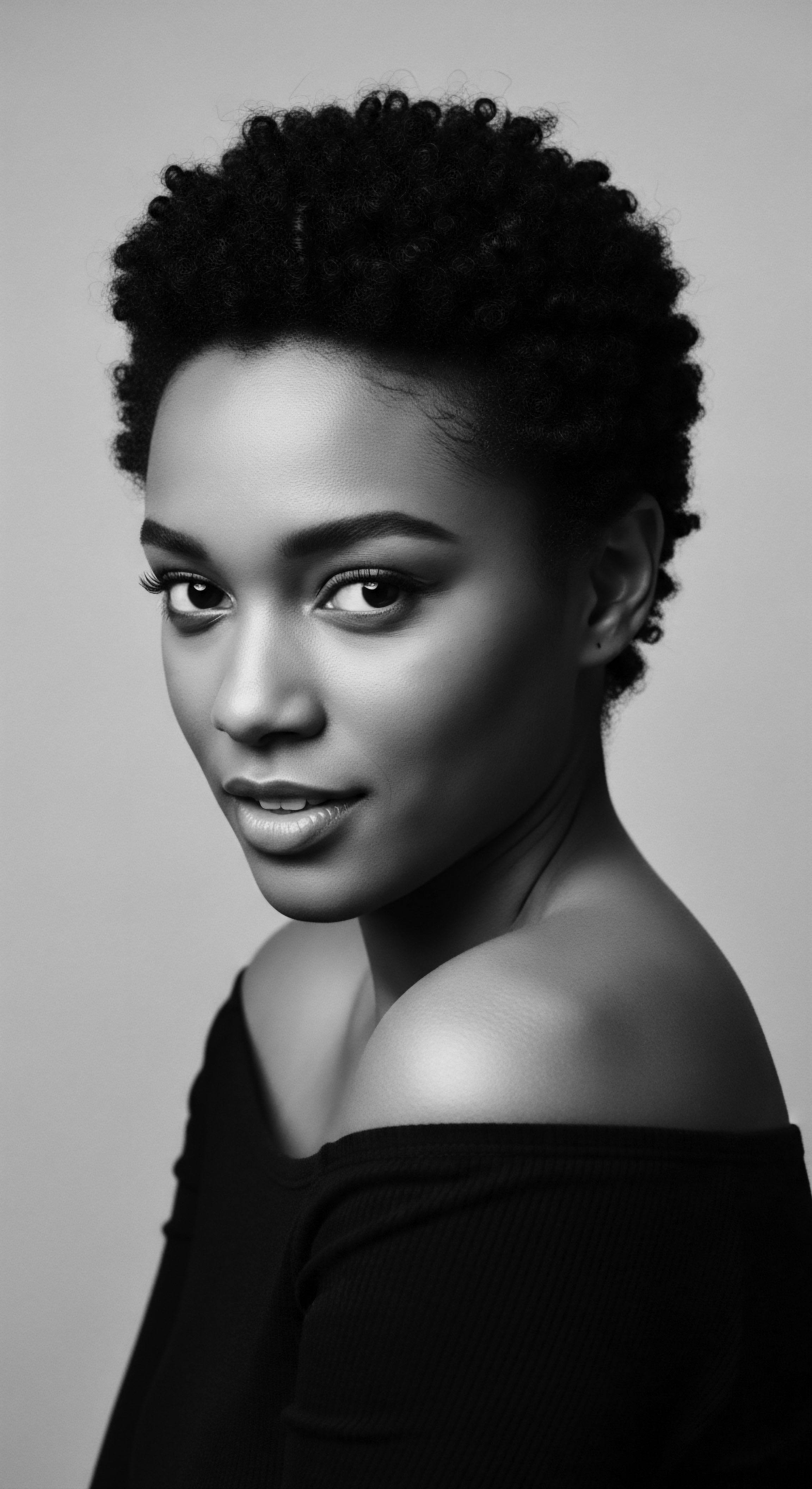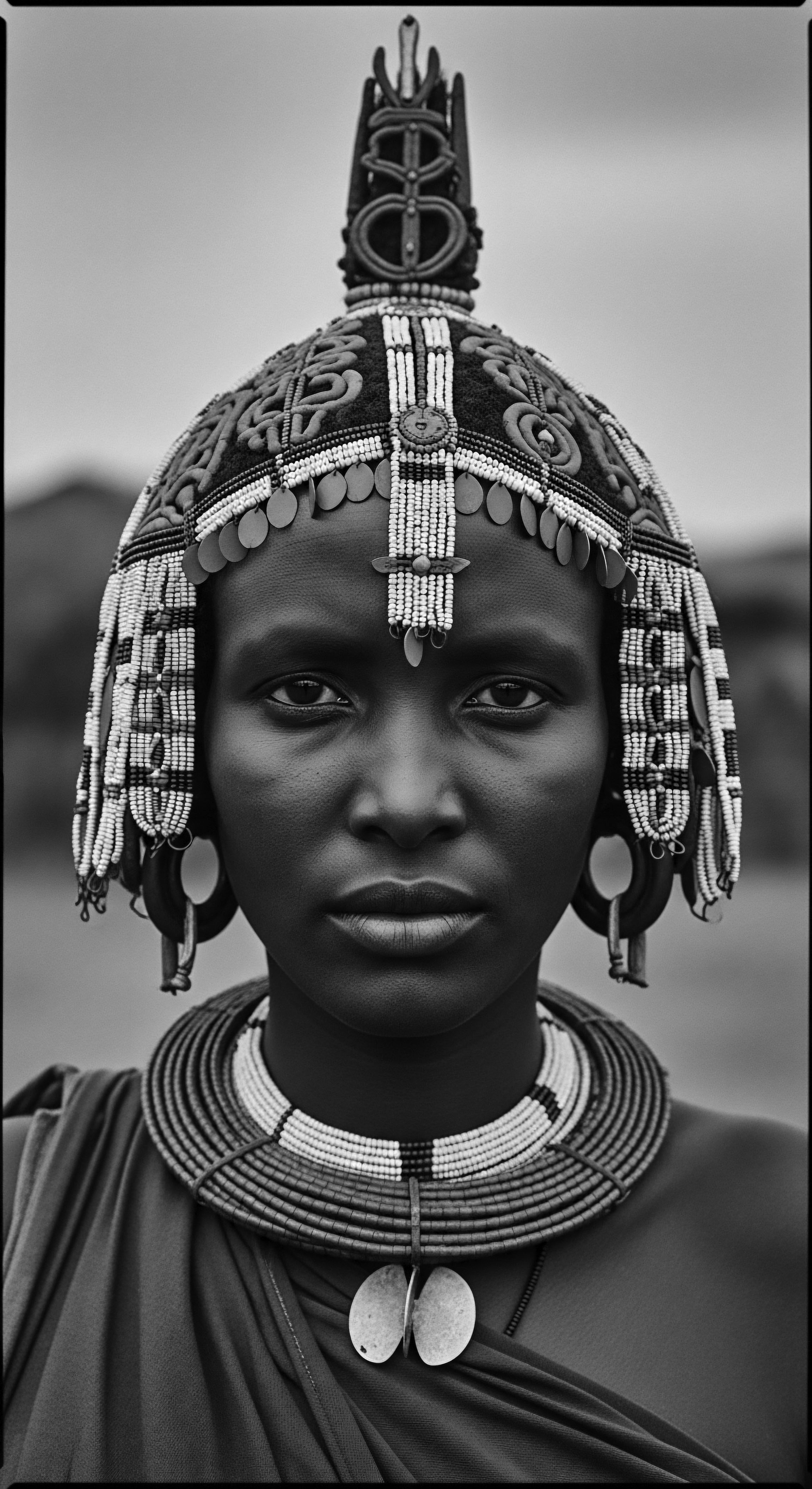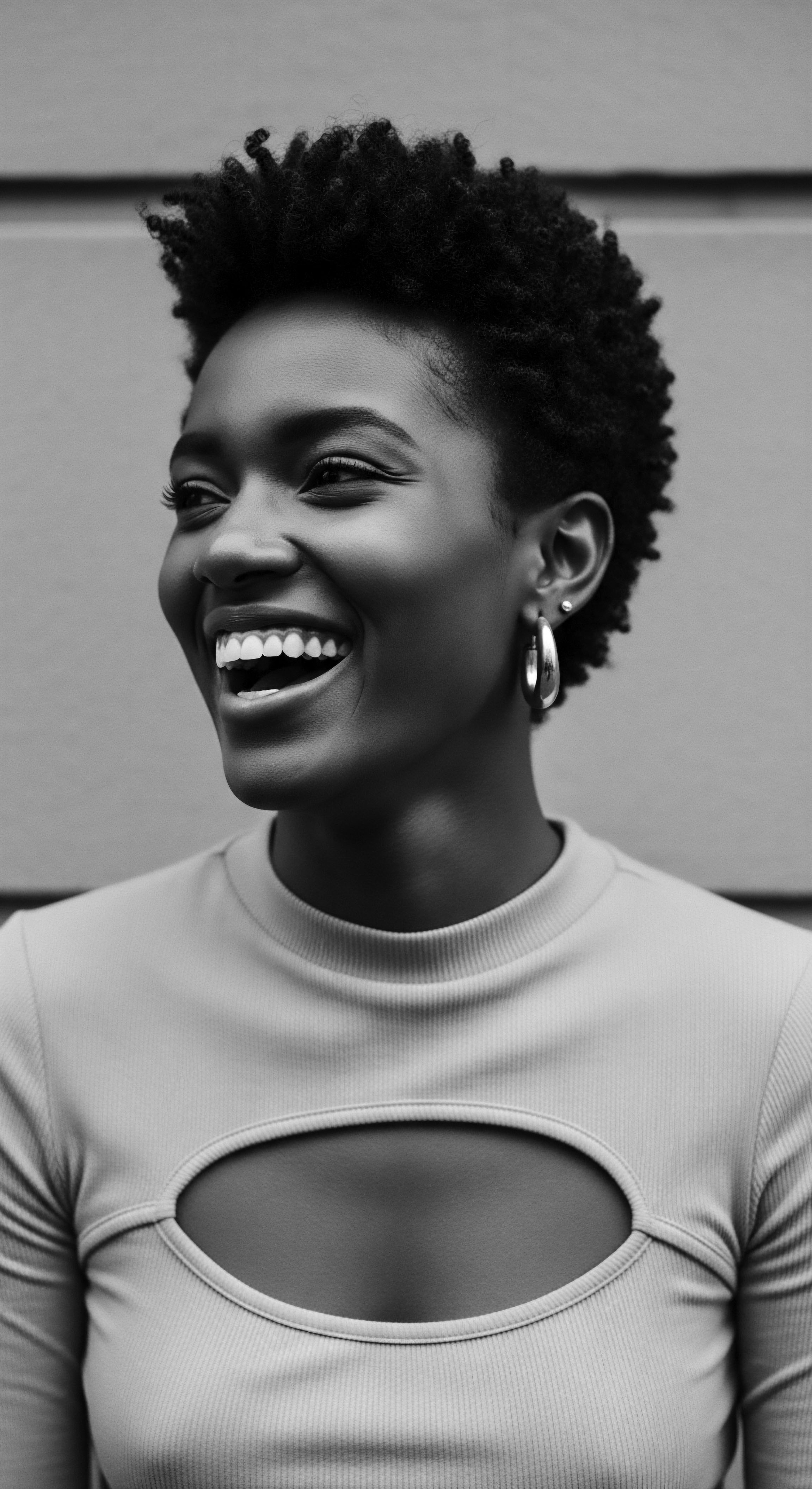
Roots
To journey into the story of Ghassoul clay is to step into an ancient lineage of care, a whisper from the very heart of North Africa’s soil. For those of us whose strands tell tales of a textured past, whose coils hold the memory of generations, this earthy wonder holds a special place. It speaks to a wisdom inherited, a deep understanding of our bodies and the earth that has sustained communities for millennia.
This clay, born from the depths of the Atlas Mountains, became a silent partner in the rituals of daily life, a gift from the land that shaped beauty traditions long before global markets recognized its intrinsic worth. It is a testament to the ingenuity of ancestral practices, a reminder that the purest forms of care often arise from the most elemental sources.
Ghassoul, sometimes called Rhassoul, derives its name from the Arabic term “ghassala” or “rassala,” which simply means “to wash”. This straightforward etymology belies the complex and profound role it has held in North African heritage, especially within Morocco, its sole known source. For thousands of years, this mineral-rich clay has been an indispensable part of beauty and purification ceremonies.
Its origins trace back to lacustrine sedimentary formations of the Tertiary age, stemming from the alteration of volcanic rocks. The clay “fields” in the Moulouya Valley, located in the Fès-Meknès region of Morocco, extend over a vast area, yielding substantial amounts for both local consumption and wider distribution.
Ghassoul clay, a gift from the Atlas Mountains, embodies ancient North African wisdom in caring for textured hair and skin.

Hair Anatomy and Physiology from an Ancestral Perspective
Understanding Ghassoul’s connection to textured hair requires looking at hair not just as a biological structure, but as a living part of one’s identity and connection to ancestry. Ancestral communities possessed an intuitive understanding of hair’s needs, an understanding honed through observation and generational knowledge rather than microscopes. They recognized hair as a strand of life , a fiber that required respectful handling and nourishment.
Textured hair, with its unique coil patterns and varied porosities, naturally tends to be drier than straight hair, given the challenge natural oils face in traveling down the spiral length. This dryness makes it susceptible to breakage if not treated with gentleness and hydrating substances.
Ghassoul clay’s properties made it particularly well-suited for these characteristics. Its inherent ability to cleanse without stripping natural oils was paramount. Unlike harsh, saponin-heavy cleansers, Ghassoul works through absorption and ion exchange. The clay is full of metallic elements with a negative charge, which draw out positively charged impurities and excess sebum from the scalp and hair.
This gentle action means the hair’s natural moisture barrier, vital for textured strands, remains largely intact. The minerals present in Ghassoul, such as silica, magnesium, potassium, and calcium, were not just cleansing agents; they were believed to nourish the hair and scalp, lending it strength and a soft feel. For communities whose hair was a visible marker of tribal belonging, social status, and spiritual connection, preserving its integrity was paramount.

Traditional Classifications of Textured Hair
While modern classification systems for textured hair—like the often-cited numbering and lettering—are relatively recent constructs, ancestral societies had their own nuanced ways of describing hair. These classifications were often tied to familial lines, regional distinctions, or even life stages. The textures ranged from tightly coiled springs to looser waves, each with its own specific care requirements. Ghassoul clay, being adaptable, offered a versatile solution for this spectrum of hair types.
Its preparation could be adjusted ❉ a thicker paste for denser, oilier hair, or a more diluted rinse for finer, perhaps drier textures. The wisdom of its application was often passed down from mother to daughter, an intimate transfer of knowledge that honored the individual needs of each family member’s crown of curls . (H. Smith, 2007, p. 54).
- Berber Hair Types ❉ Traditional understanding recognized variations in hair thickness and curl pattern among Berber women, adapting Ghassoul mixtures to suit.
- Scalp Health ❉ The clay was prized for its ability to regulate sebum and alleviate scalp irritation, a constant concern for hair of all textures.
- Hair Strength ❉ Minerals in the clay contributed to the perceived strength and resilience of hair, essential for styles that required pulling or braiding.
The tradition of using Ghassoul in the preparation of brides’ dowries in Morocco speaks volumes about its perceived value and its link to personal care, beauty, and well-being. It was more than a cosmetic; it was a staple of self-care, a symbol of purity, and a foundation for health. This historical context underscores how deeply Ghassoul became woven into the cultural fabric, serving as a silent guardian of hair health across generations.

Ritual
The application of Ghassoul clay transcended mere cleansing; it was a practice steeped in intention, a ritual that connected the individual to communal heritage. These were not quick, fleeting moments of self-care. Instead, they comprised deliberate acts, often part of the cherished hammam tradition , where women gathered to cleanse, purify, and nourish their bodies and spirits. The clay, in its raw stone form, was carefully washed and dried under the intense North African sun for days before being pulverized into a fine powder.
This powder, when mixed with water or aromatic floral waters such as rosewater or orange blossom water, transformed into a silky paste, ready to adorn and cleanse. The consistency could be adjusted, allowing for a personalized approach to various hair needs, reflecting a nuanced understanding of hair’s variable nature.

Ghassoul in Traditional Hair Cleansing
For textured hair, Ghassoul served as a shampoo alternative, gently removing impurities and excess oil without stripping the hair of its vital natural moisture. Traditional shampoos, often harsh and drying, were not part of this ancestral lexicon. The clay’s negative charge attracted positively charged dirt and toxins, binding them so they could be rinsed away, leaving hair clean yet still supple. This capacity made it exceptionally suitable for the unique needs of curls and coils, which tend to be drier and require delicate handling to avoid breakage.
Women would apply the rich paste to their damp scalp and hair, massaging it in gently. This was not a hurried process; it was a moment of connection, an act of self-reverence. The clay was allowed to sit, often for several minutes, sometimes longer, allowing its mineral properties to penetrate and cleanse deeply.
The rinse that followed revealed hair that felt softer, lighter, and more manageable, ready for the next stages of care. This methodical approach to hair cleansing underscores a holistic view of well-being, where external beauty rituals were intimately tied to internal balance.
Traditional Ghassoul use reflects a profound understanding of textured hair, prioritizing gentle cleansing and moisture preservation.

How Did Ghassoul Support Styling?
The conditioning qualities of Ghassoul clay played a subtle yet significant role in preparing textured hair for traditional styling. By leaving the hair softer and more supple, it made detangling easier, reducing the strain on delicate strands that can lead to breakage. This was particularly important for intricate protective styles common in North African and broader African heritage. Hair that was well-cleansed and conditioned with Ghassoul could be more easily sectioned, braided, twisted, or coiled, forming the basis for styles that not only held cultural meaning but also shielded hair from environmental stressors.
Historically, protective styles like various forms of braids, cornrows, and wraps served multiple purposes ❉ expressing identity, signaling marital status, or preparing for ceremonial occasions. For instance, the Ghassoul ritual within the hammam often preceded specific hair preparations for events like weddings. The clay’s ability to enhance the hair’s natural silkiness would have contributed to the smooth execution and longevity of these protective styles.
| Traditional Agent Ghassoul Clay |
| Region of Use North Africa (Morocco) |
| Primary Cleansing Mechanism Absorption, Ion Exchange |
| Hair Type Affinity (Historical) All hair textures, particularly textured hair |
| Traditional Agent Sidr Powder |
| Region of Use North Africa, Middle East |
| Primary Cleansing Mechanism Natural Saponins |
| Hair Type Affinity (Historical) Hair and scalp cleansing, often for irritated scalps |
| Traditional Agent Soapwort (Saponaria) |
| Region of Use Mediterranean, Europe |
| Primary Cleansing Mechanism Saponins |
| Hair Type Affinity (Historical) General cleansing, used for various hair types |
| Traditional Agent These diverse historical agents illustrate a long-standing heritage of natural hair care, with Ghassoul holding a distinctive position for its mineral-rich, gentle cleansing action. |
Beyond cleansing, the softening properties of Ghassoul were also beneficial when creating styles that aimed for definition or sleekness. While not a direct styling product, its role in improving hair’s overall condition facilitated the creation of many traditional looks. This traditional preparation contrasted sharply with modern chemical treatments, which often relied on harsh agents to alter hair structure. Ghassoul represented a gentle partnership with hair’s natural inclinations.

Relay
The legacy of Ghassoul clay in North African heritage extends far beyond its initial cleansing ritual; it represents a living continuum of ancestral wisdom, constantly reinterpreted for contemporary textured hair care. This clay stands as a tangible link to ancient philosophies of well-being, where hair health was intrinsically connected to the body’s overall vitality and a respectful relationship with the earth. The knowledge surrounding Ghassoul’s preparation and application was not codified in textbooks, rather, it was transmitted through direct experience, within the intimacy of family and community spaces, often within the humid sanctity of the hammam.

Ghassoul’s Holistic Health Implications
Ghassoul clay’s mineral composition—rich in silica, magnesium, potassium, and calcium—was intuitively understood to be beneficial, long before modern science could isolate and quantify these elements. Magnesium, for example, is recognized for its soothing and anti-inflammatory attributes, which would have offered relief for irritated scalps. Silica, a component of sand, was known to contribute to a healthy sheen and strength in hair. The collective effect of these minerals provided a gentle yet potent remedy for maintaining scalp hygiene and hair vitality, critical for the diverse needs of textured hair.
For communities where hair health was a marker of prosperity and lineage, the problem-solving capabilities of Ghassoul were highly valued. Dryness, irritation, and breakage, common concerns for textured hair, could be addressed through regular application of the clay. Its non-stripping action ensured that hair retained its essential moisture, making it more resilient. This historical continuity of use offers a compelling case study ❉ while formal research on Ghassoul’s specific impacts on textured hair dates to relatively recent times (e.g.
Souhail et al. 2013 on physicochemical characteristics), its sustained use across centuries by indigenous North African populations, particularly Berber women, stands as a testament to its practical efficacy. These communities observed direct benefits—hair that felt softer, was easier to manage, and appeared healthier—confirming its place in their hair care regimens.
The centuries-old use of Ghassoul clay in North Africa speaks to an enduring, inherited knowledge of natural hair and skin care.

Nighttime Rituals and Hair Protection with Ghassoul
The daily care regimen in North African heritage, particularly for textured hair, often extended into careful nighttime rituals designed to preserve the day’s work and protect delicate strands. While specific artifacts detailing Ghassoul’s direct role in nighttime protection are sparse, its contribution to overall hair health would have indirectly supported such practices. Hair, after being cleansed and softened with Ghassoul, would have been more amenable to protective styles worn during sleep, such as braiding or wrapping in soft cloths. This careful preparation would minimize tangling and breakage that can occur overnight, thereby preserving the hair’s integrity.
The tradition of protecting hair while sleeping speaks to a deep cultural understanding of hair’s fragility and its need for sustained care. Bonnets, wraps, and elaborate head coverings were not just fashion accessories; they were essential tools in the preservation of hair health and style. A significant historical example from the broader African diaspora, particularly among enslaved African women, shows how headwraps evolved from symbols of resistance and identity to practical tools for managing and protecting hair under harsh conditions (Gordon, 2018). While the direct use of Ghassoul in these specific diaspora contexts might differ from North Africa, the underlying principle of protecting textured hair through wraps and careful nighttime practices remains a powerful shared ancestral thread, with Ghassoul contributing to the foundational health that made such protection effective.
The minerals within Ghassoul also supported a healthy scalp, reducing itchiness or irritation that could disrupt sleep or lead to scratching, which further damages hair. A clean, balanced scalp created by Ghassoul would have been a comforting base for these protective sleep rituals.

How do Modern Preparations Compare to Ancestral Methods?
Today, Ghassoul clay can be found in various forms, from raw stones to fine powders, often with instructions for mixing with water or other liquids. This modern convenience echoes the ancestral wisdom of custom preparation. Historically, the process involved more than simply adding water.
As some accounts suggest, Ghassoul stones were steeped in a water-based marinade with specific herbs and spices, like orange blossom, chamomile, or lavender, over an extended period—a testament to the meticulousness of ancestral beauty alchemy. This slow maceration process was believed to unlock the clay’s full potential, enhancing its cleansing and conditioning properties.
| Aspect Source Form |
| Traditional Practice Raw stones, dried in sunlight, then pulverized. |
| Contemporary Use Powdered, sometimes pre-mixed as liquid/solid formulations. |
| Aspect Mixing Agents |
| Traditional Practice Water, rosewater, orange blossom water, often with herbal infusions. |
| Contemporary Use Water, hydrosols, occasionally combined with other modern hair care ingredients. |
| Aspect Preparation Time |
| Traditional Practice Lengthy maceration, days of drying and processing. |
| Contemporary Use Quick mixing for immediate application, minutes. |
| Aspect Usage Context |
| Traditional Practice Integral to hammam ritual, familial beauty traditions, dowry. |
| Contemporary Use Home-based self-care, spa treatments, part of natural beauty regimens. |
| Aspect While modern methods prioritize convenience, they retain the core principles of ancestral Ghassoul preparation, connecting current practices to a rich heritage of natural cleansing. |
This careful, almost ceremonial, preparation of Ghassoul highlights the value placed on natural remedies within North African heritage. It reflects a patience and respect for ingredients that often seems lost in fast-paced modern routines. The transition of Ghassoul from a home-prepared staple to a commercially available product underscores its enduring relevance and adaptability across changing times.

Reflection
As we close the book, yet keep the pages open, on the historical use of Ghassoul clay in North African heritage, we are left with more than facts and figures. We carry the resonance of a tradition, a memory held within each strand of textured hair it has touched across centuries. Ghassoul is not simply a cleansing agent extracted from Moroccan earth; it is a profound testament to the ancestral ingenuity that sought wellness and beauty directly from nature’s generous hand. It speaks to a heritage where care for one’s hair was interwoven with communal rituals, personal identity, and a deep, abiding respect for the earth’s offerings.
For Black and mixed-race communities, whose hair journeys have often been fraught with external pressures and misrepresentations, the story of Ghassoul clay stands as a powerful reaffirmation. It reminds us that our unique hair textures were not merely tolerated but celebrated, understood, and nourished with sophisticated, naturally derived methods long before commercial industries recognized their potential. This clay, with its gentle touch and mineral richness, mirrors the resilience and inherent beauty of textured hair itself – a beauty that resists harshness, thrives on thoughtful attention, and holds a sacred place in the tapestry of our shared past. The wisdom of Ghassoul continues to teach us, not just about cleansing, but about reconnecting with the ancestral pulse of self-care, grounding us in a living legacy that promises enduring vibrancy.

References
- Bettiche, O. Melhaoui, A. & Malek, F. (2012). Mineralogical and Physico-Chemical Characterization of the Rhassoul Clay of Morocco. Clay Minerals.
- El Fadeli, S. Lekouch, N. & Sedki, A. (2010). Analysis of traditional pharmacopeia product from Morocco ‘Rhassoul’. Environmental Geochemistry and Health.
- Faustini, F. Marchesini, I. & Dondi, M. (2018). Rhassoul ❉ a ritual for hair and skin care to purify and relax body and soul. Materials Today ❉ Proceedings.
- Gordon, T. (2018). African-American Hair as Culture and History. Lexington Books.
- H. Smith. (2007). African Hairstyles ❉ Styles of Yesterday and Today. Africa World Press.
- Souhail, B. Idrissi, L. Mouhib, M. et al. (2013). Physicochemical and Mineralogical Characterization of a Natural Moroccan Clay ❉ Rhassoul. Journal of Materials and Environmental Science.
- Tokarský, J. (2018). Ghassoul – Moroccan clay with excellent adsorption properties. Materials Today ❉ Proceedings.
